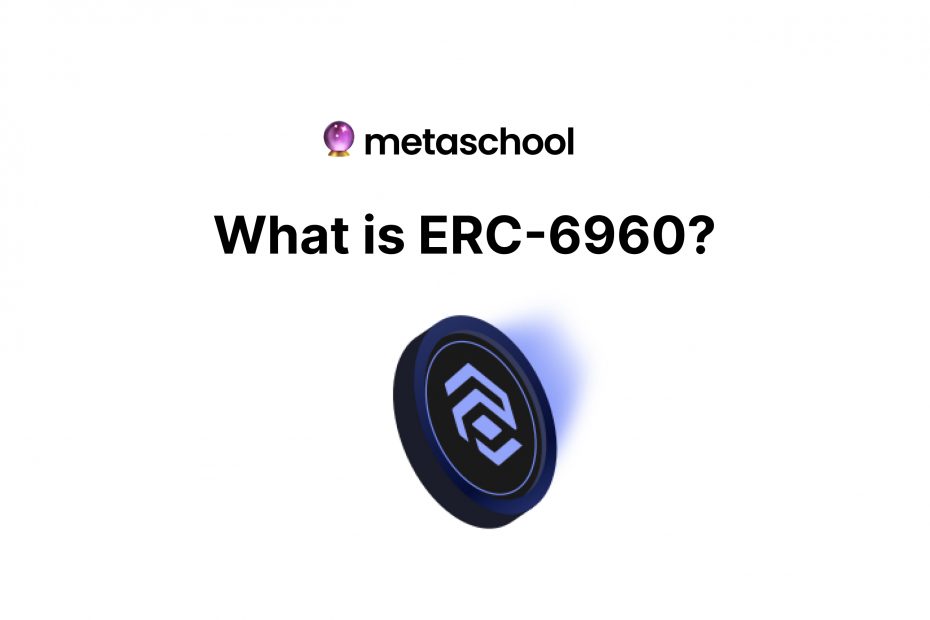Table of Contents
As recently as 2023, a DeFi fin-tech revolutionist, Polytrade, authored something groundbreaking. On April 30, the project details were officially posted on Ethereum’s website. Moreover, Polytrade’s Twitter reposted the story on June 14, making it official.
So, what exactly is this project? It is a new ERC token standard available to the Ethereum ERC-verse now. And everyone’s calling it ERC-6960.
The dual-layer token (DLT) standard is designed to address the drawbacks and shortcomings of the ERC-1155 token standard. It is also aimed at improving ERC token classification and management.
BUT WHY!?
Exactly! But why? There are already tons of Ethereum token standards in the market. Why another token standard? In order to understand the reason/s for developing the ERC-6960 token, we will have to understand how the three popular ERC tokens work and what is so special about them.
The trio
In ERC tokens, there is a group of three popular tokens that consist of ERC-20, ERC-721, and ERC-1155 (the latest of all three). ERC-20 is a token standard that was created for fungible assets and ERC-721 is a token standard designed for non-fungible assets.
Then followed ERC-1155, a semi-fungible token standard on the Ethereum blockchain, which allowed the creation of tokens that can represent both fungible and non-fungible assets within a single smart contract.
| Features | ERC-1155 | ERC-721 | ERC-20 |
|---|---|---|---|
| Fungible tokens | Yes | No | Yes |
| Non-fungible tokens | Yes | Yes | No |
| Batch transfers | Yes | No | No |
| Unlimited token types | Yes | No | No |
| Smart contract size | Smaller | Larger | Larger |
| Gas costs | Lower | Higher | Higher |
| Use cases | Games, digital collectibles, metaverse | Digital collectibles, art, gaming | DeFi, payments, gaming |
The fault in the standards: ERC-20 & ERC-721, together
Now, for instance, you are into GameFi, and have been playing, say, CryptoKitties for quite some time.
Naturally, you would want to own some of the assets that you have earned in the game, and collect and keep them as valuables. In a game like CryptoKitties, you can only do so via tokens. Some of these tokens would be fungible i.e. ERC-20 and some would be non-fungible i.e. ERC-721.
If you own fungible and non-fungible in-game assets, both, you would need to have several different smart contracts supporting those assets. Sounds like a nightmare, no? That represents no concept of fractional NFTs or co-ownership of properties.
The solution… almost: ERC-1155
The inefficiency, lack of management, and interoperability of these token standards are solved by ERC-1155. It allows the management of both fungible and non-fungible tokens efficiently, effectively, and economically within a single smart contract.
The extension of the (almost) solution: ERC-6960
But then what does the ERC-6960 do? The ERC-6960 aims to increase the scalability and flexibility of ERC-1155 and to work as an extension of ERC-1155 along with other implementations. These include the hierarchical representation of fungible and non-fungible tokens through a dual-layer classification. In simple words, as a dual-layer token standard, ERC-6960 will allow one asset to be divided into several sub-assets.

For instance, you have a fungible asset whose total supply is 60 units. The ERC-6960 will allow you to divide the asset into, say, three sub-assets with varying supplies of 10, 20, and 30 units, respectively. It is similar to taking a $500 dollar bill and dividing it into five $100 bills. You may check out the Gitbook of the token standard to read more.
What do the token writers say?
The founder of Polytrade is certain that ERC-6960 has the potential. Polytrade is essentially a trade finance platform on the Polygon blockchain which provides real-world borrowers access to low interest rates and swift financing.
Metaschool connected with one of the token authors, Ashish Sood, who shared that the ERC-6960 token is very special to him and the Polytrade team.
When asked about why he felt the need for an extension token of ERC-1155, Sood shared:
“Fractionalized asset projects often face the challenge of representing ownership in a clear and flexible manner.
Two common approaches involve creating ERC-20 tokens with low values:
a. where your holding of each token represents your share in the asset
b. locking ERC-721 and minting multiple ERC-1155 tokens as a representation of ownership.However, these methods lack true fractionalization. ERC-6960 introduces a solution. It utilizes a main ID that links to the parent NFT, while the SubID can hold different variables. One of the biggest features is Batch Settlement for all fractions with a click of a button. Even if there are 100 owners of the same asset the NFT can be settled just using 1 click of a button”
When asked what drove him and the team to create an ERC token standard, Sood replied:
“Our motivation was very simple. There was a gap and somehow we saw a path and had a reason. We are deeply motivated people and want to see the overall growth of the ecosystem and anything that we can do is a privilege”.
What is your take on the new ERC-6960? Let us know in the comments.
